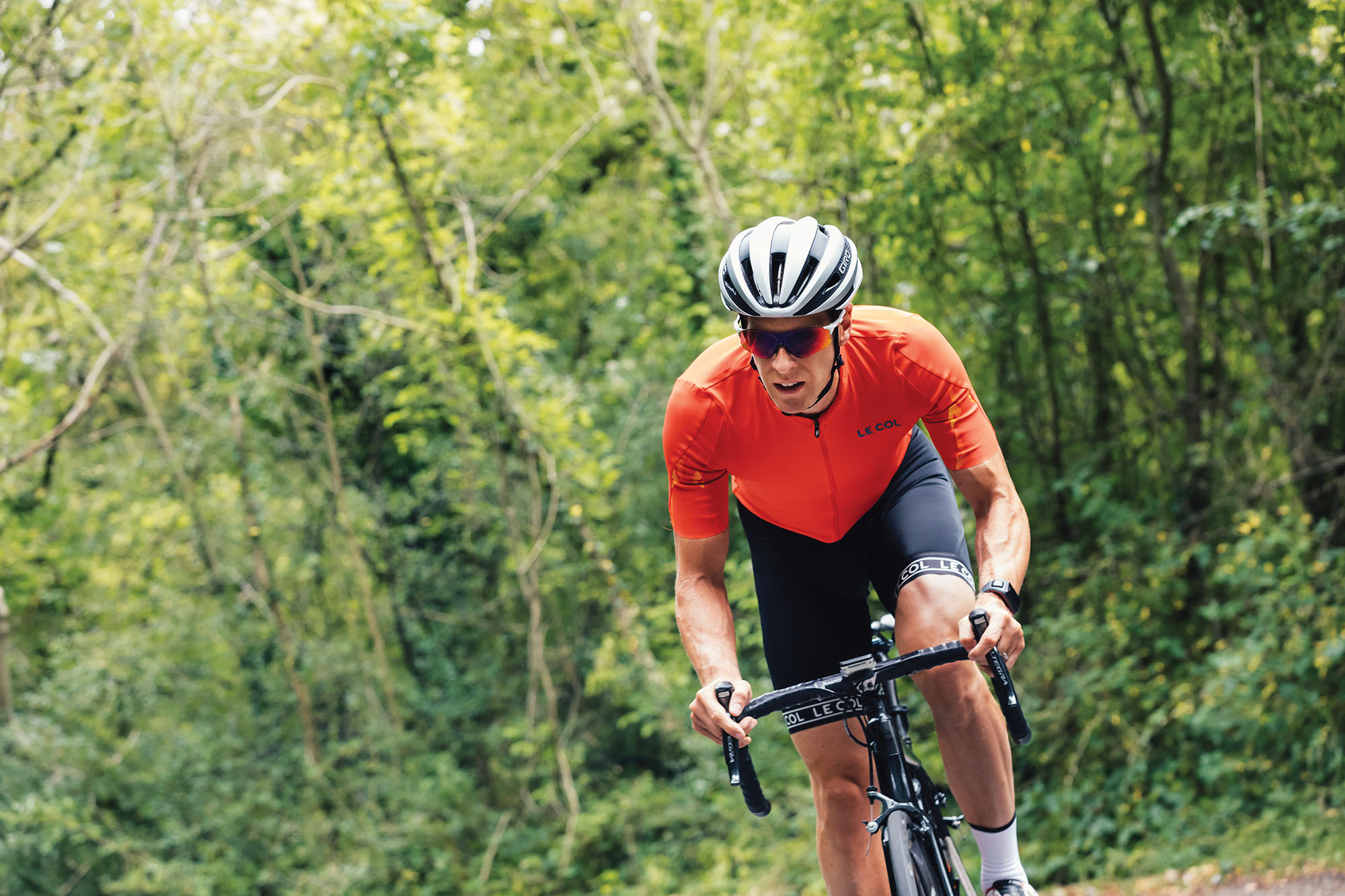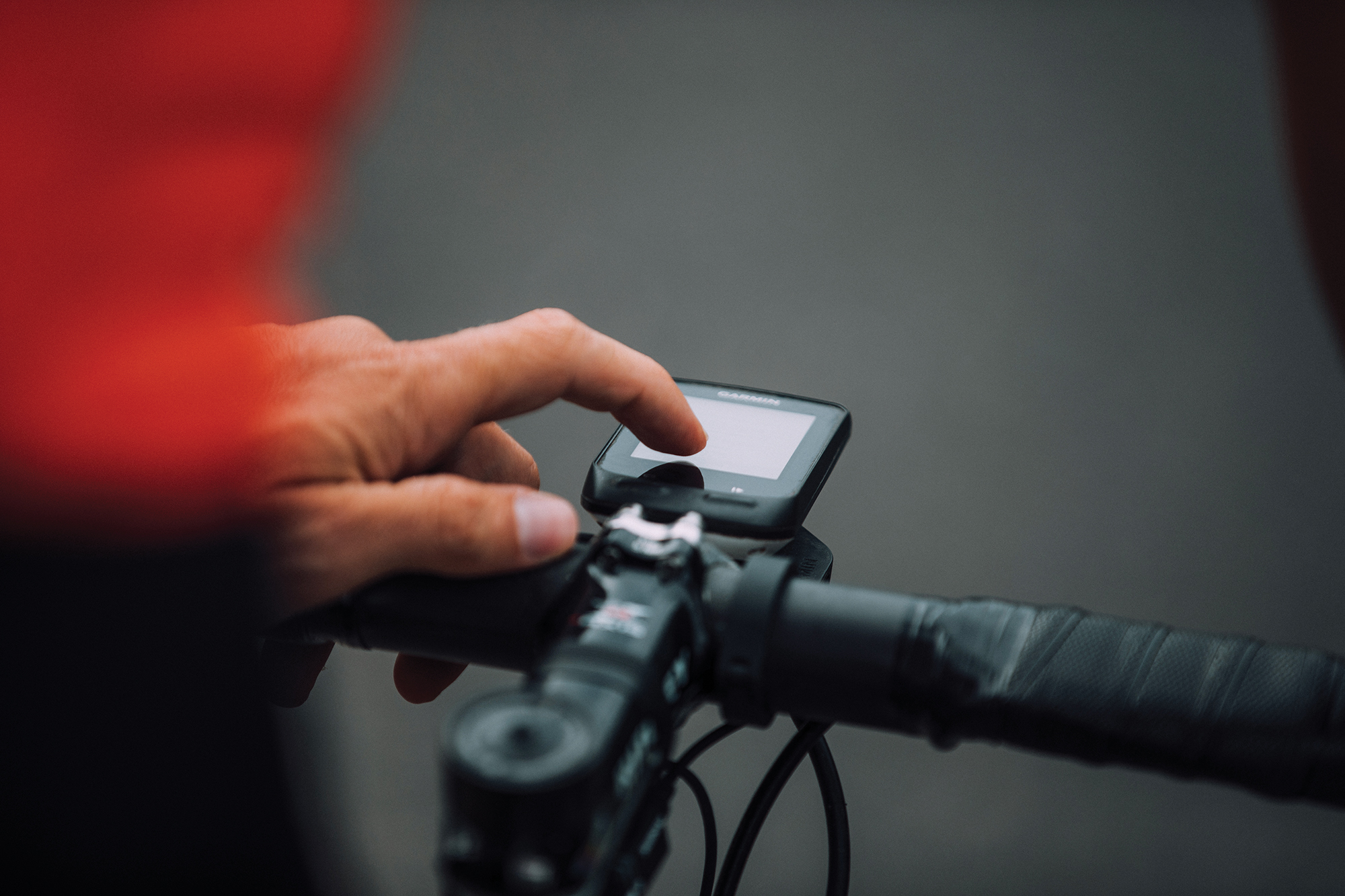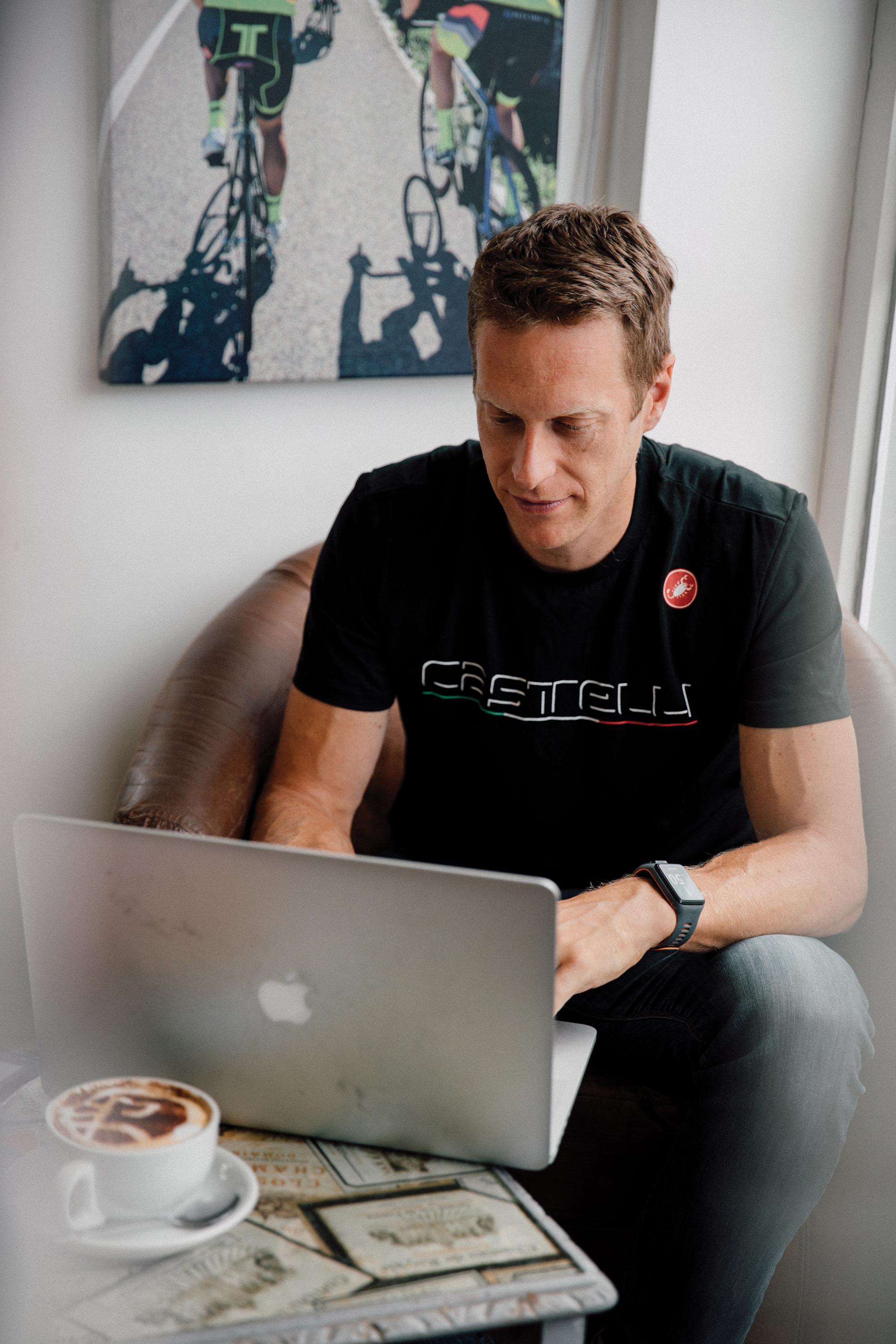Investigation: Should you let data dictate your training?
Modern training apps claim to be able to monitor your form, fatigue and race-readiness by algorithm. But can artificial intelligence really know more than you about your body? Hannah Reynolds investigates

Imagine this scenario: an athlete is preparing for a competition, carefully recording every session and watching the peaks and troughs of their data curves with an eagle eye. They heap on training stress while balancing it with judicious amounts of rest, all the while noting their fitness scores creeping up as the number representing their form hits the golden target on the right day.
Everything is in place for the ride of their life. But when race day comes, it just doesn’t happen — they under-perform, the PB proves elusive. How could this be, they think, when everything was objectively on track?
>>> Subscriptions deals for Cycling Weekly magazine
Our use of data to inform choices, particularly in a business setting, is now second nature. Whether consciously or unconsciously, data drives many of our daily decisions. The emotionless philosophy of ‘numbers don’t lie’, letting data make decisions for us, gives us a pleasing kind of certainty. But not every ingredient of fitness or form is quantifiable — leaving big gaps in our self-knowledge. When it comes to our bodies, is letting data dictate our training a risky strategy?
Cycling coach Holly Seear (springcyclecoaching.co.uk) uses data-driven site TrainingPeaks to set and monitor her clients’ sessions. The key to making decisions, she says, is “high-quality data and tracking over a long period of time.” One recorded session tells you very little, but over time “the numbers start to give a really good clue and patterns begin to emerge.”
Physiologist Dr Jamie Pringle agrees: “When there is enough comparative data, that’s when it is really valuable. Where data starts to be beneficial is its predictive qualities, where you can start to see things ahead of them happening.” Seear uses her athletes’ data to plan their training: “The more data you have, the more accurate it becomes. Over a long period, I track fitness, fatigue and form and I can manipulate that with the training I set.” With sufficient volume of training data over a significant period of time, you become able to anticipate changes in performance instead of merely reacting to it.
>>> Cycling Weekly is available on your Smart phone, tablet and desktop
The latest race content, interviews, features, reviews and expert buying guides, direct to your inbox!
Using training data is a very powerful tool in improving physical performance, so what could have gone wrong with our athlete in the scenario outlined above? The answer is many things. Firstly, the data itself. The quality of the decisions is dependent on the quality of the data. The overall amount of data is one factor in its quality but so is accuracy, reliability and completeness. When was the last time you calibrated your power meter? Has your computer ever failed to record your full session? This affects the quality of the data you are basing your decisions on.
Secondly, data itself - without interpretation - has no intrinsic meaning: “Data is only good if it is accurate, you know what it means and you use it to your advantage,” says Seear. “Knowing how to manipulate training to get riders hitting the right numbers on the day requires knowledge not just of training principles, but of the athlete.” The ‘numbers’ required for good form and best performance are personal, unique to each individual.

The training data we can capture and upload doesn’t show the full picture. “If you spend two hours mowing the lawn,” says Seear, “that won’t show up in TrainingPeaks but you can be absolutely certain it will have an effect on your fatigue and ability to train the next day.”
Finally, the metrics measured by ride data don’t tell you everything about what went wrong on the day; fuelling, nervousness, and emotional state have an effect on power production and performance. Technique and tactics also have an effect on race outcome.
Seize control over data
If rules are made ‘for the guidance of the wise and obedience of fools’, how can we take a wiser approach to our use of data?
“Data is never the whole story,” says Seear, who asks her athletes to add a comment alongside every training upload. “Data is great but how you felt about the session is also important.” Sleep, mood, stress and motivation to train are very subjective but tell you a lot about the complete athlete — an athlete’s feedback still has very real value to coaches.
Profile of Moods States (POMS) is a well-established technique developed by psychologists in 1971, now used in various forms within sport and other areas of health and wellbeing. A questionnaire is used to create a score for tension, depression, anger, vigour, fatigue and confusion. Happy, healthy athletes who are ready to perform produce an iceberg-shaped graph. This relatively simple assessment has been shown to be a good predictive tool. A dip instead of spike can indicate the early onset of over-training syndrome.
Even without completing a daily questionnaire and simply giving a daily mood score can reveal a lot to your coach. “TrainingPeaks flags up a red warning triangle if an athlete feels low motivation, ill or tired,” explains Seear, describing the dashboard in front of her, with which she monitors her athletes. Conjuring visions of a Dr No-style headquarters, lights flash for Seear when an athlete turns in a poor score. “I get a red light if a session isn’t completed or is done badly.”
Once the alarm sounds, a good coach initiates a conversation. “My clients have kids, travel, demanding jobs, so it’s important I know about that — all of that life stress adds up to accumulative fatigue. If they are having a bad time, it’s important I know that, which is why the athlete-coach relationship is so important. There is no point me adding a hard physical stress on top of it,” says Seear.
This obviously also applies to self-coached cyclists, but it is harder to make those decisions for yourself about when to back off and when to push on. The problem with relying purely on training data is that accumulated fatigue may only be recognised once your training is affected — often too late.

Training data is not the only tool in a coach’s tool-box when it comes to making decisions for their athletes; they also have years of experience and, probably the most important asset of all, subjectivity. The risk of an adverse outcome by letting data dictate your training is higher for the self-coached individual.
“It is very difficult to be objective about your own training,” says Seear. “You have an emotional bias. If I was training for an event, I would have a coach. An athlete is very much in-the-moment, whereas a coach has a longer-term view.” One day of sub-par numbers can send an athlete into panic training mode, ending with them lurching between doing too much and doing too little. “A coach can moderate that emotional bias.”
Indeed, we heard from several coaches expressing frustration about athletes being too eager to obey training data rather than reflecting on how they feel and listening to advice. “Form and fatigue are complex,” commented Gavin Atkins, a performance consultant at the English Institute of Sport, “and cannot be simply reduced to numbers.”
It is clear that putting all your faith in data for decision-making is risky for a number of reasons - but trusting intuition alone is similarly risky.
Pringle explains: “The risk to the individual and the coach on using just intuition is self-confirming bias. There is a disconnect between how the individual feels about themselves and how they think they should feel about themselves. Data can show you a trajectory of where you are going and protects you from going too far off track.”
The not very surprising outcome of all these conversations is that the most effective training decisions come when you use a balance of data and intuition. “The wisdom of a coach in conjunction with data leads to asking better questions of where the data is going,” adds Pringle.
“Both [data and intuition] is absolutely key,” agrees Seear, “which is why I ask athletes to comment on every session. Numbers are piece of the picture but not the whole picture.” Ignoring how you feel always ends badly. “You could race and train without any data, but without listening to your body at some point, you will come a cropper.”

Dr Jamie Pringle simplifies the principles of training to a very short phrase: “Endurance training is about doing enough but not too much.” The key is knowing how much is too much.
Heart rate variability is one strategy used for assessing fatigue. However, relying on it is risky. “Resting heart rate definitely gives you a clue if something is out of whack, particularly if you see some changes over several days,” says Seear, “but it is only when you put all the data together that it’s powerful.”
Pringle agrees: “Heart rate variability is of limited value on its own; you have to understand the individual and have enough data to be able to spot normal and abnormal.” Again, it comes down to having a high enough volume of data, covering enough comparable metrics.
Having a definitive answer to the question of your fatigue levels is very appealing, and a number of apps have used heart rate variability as a means to give that clear answer. However, these apps also request self-reported information, such as sleep, readiness to train and stress - dig a little deeper into the algorithm and the weighting is more toward self-reported metrics than heart rate.
Your response to training is personal to you alone - the level of training stress that makes one athlete peak could for someone else lead to burn-out.“It is helpful to think of training adaptation as on a continuum, with peak performance at one end,” says Dr Jamie Pringle. “Identifying where you are on that, and more importantly which direction you are heading in, is hugely beneficial.”
Finding ways to identify when an athlete is fatigued and when they’re ready to race remains the subject of research. “The potential for the future includes things like monitoring force development at the pedal,” says Pringle. “In research, a strength-and-conditioning coach working with triathletes got them on a force mat two or three times a week over several years for reactive stress jumps, a test of their ability to produce force quickly and reactively. When their reactive strength measure was better, they were rested and ready to race.”
Rested cyclists can jump, it seems. Was that the only metric? “No data, just a jump. A similar test could be created looking at reactive force and angle of force production at the pedal.” Knowing an athlete’s ‘trainability’ score would add another useful piece of knowledge to the data jigsaw.
This feature originally appeared in the print edition of Cycling Weekly, on sale in newsagents and supermarkets, priced £3.25.
Founded in 1891, Cycling Weekly and its team of expert journalists brings cyclists in-depth reviews, extensive coverage of both professional and domestic racing, as well as fitness advice and 'brew a cuppa and put your feet up' features. Cycling Weekly serves its audience across a range of platforms, from good old-fashioned print to online journalism, and video.